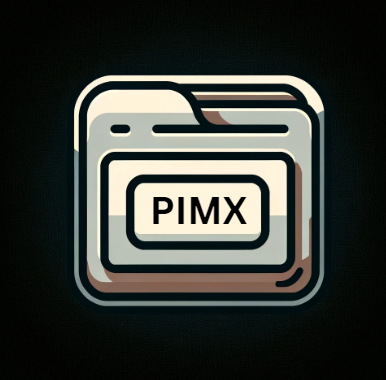.PIMX File Extension

Adobe Package Installation Management File
| Developer | Adobe Systems |
| Popularity | |
| Category | Text Files |
| Format | .PIMX |
| Cross Platform | Update Soon |
What is an PIMX file?
The .PIMX file extension represents a file type specifically known as Adobe Package Installation Management File.
This format is primarily associated with Adobe’s suite of products and is utilized within the context of software distribution and package management.
The .PIMX file plays a crucial role in defining the parameters and the sequence of actions that should be taken during the installation of an Adobe software package.
More Information.
Initially, the .PIMX file was designed to cater to the needs of complex software installation frameworks. As Adobe’s software suites became more intricate and feature-rich.
There was a growing necessity for a robust file format that could handle the intricacies of software installation, including the installation order, dependency resolution, and execution of custom scripts.
Thus, the .PIMX file was introduced to address these requirements, ensuring a smooth and error-free installation process.
Origin Of This File.
The .PIMX file extension originated from Adobe Systems Incorporated, a company widely recognized for its multimedia and creativity software products.
Adobe’s constant innovation in software distribution mechanisms led to the creation of the .PIMX file format to streamline and manage the installation of its extensive software packages.
File Structure Technical Specification.
A .PIMX file is structured in XML format, which means it is both human-readable and machine-processable. This structure allows for clear definition of installation instructions and parameters.
The file typically contains information about the software components to be installed, the sequence of actions, file paths, and any necessary scripts or commands that need to be executed during the installation process.
How to Convert the File?
If you’re interested in converting a .PIMX file (an Adobe Package Installation Management File) to another format, you’ll be essentially dealing with the extraction and transformation of XML data. Here’s how you can approach this task from a hands-on, practical point of view:
Understand the .PIMX File Content:
- Begin by opening the .PIMX file in a text editor. Note that it’s formatted in XML, which is both human-readable and structured.
- Familiarize yourself with the structure – notice the tags and the hierarchy they form. This will be crucial for extracting the data accurately.
Decide on the Target Format:
- Determine the format you want to convert the .PIMX file into. Common formats might include JSON for data interchange or CSV for spreadsheet use.
- Understand the structure and syntax of the target format to ensure a smooth conversion.
Choose Your Tools:
- Select a programming language and libraries that are well-suited for XML parsing and can output the desired format.
- For instance, Python with its xml.etree.ElementTree for XML parsing and json or csv modules for output could be an excellent choice.
Set Up Your Environment:
- Prepare your development environment. This could involve setting up a Python environment, installing necessary libraries, or configuring your IDE (Integrated Development Environment) for the task.
Read and Parse the .PIMX File:
- Write a script or use a tool to read the .PIMX file.
- Utilize an XML parsing library to parse the file. Handle the parsing in a way that respects the hierarchical structure of the XML.
Transform the Data:
- Traverse the parsed XML data. Extract the necessary information while navigating through the elements and attributes.
- Transform this data into the structure required by the target format. For JSON, this would typically be a nested dictionary or list in Python. For CSV, it would be a series of rows and columns.
Output the Data:
- Use the appropriate library or function in your chosen programming language to convert the structured data into the target format.
- Write this data to a new file, ensuring that it adheres to the syntax and structure of the target format.
Test and Validate:
- Test your script or tool to ensure it’s converting the data accurately.
- Validate the output file. Ensure that it’s correctly structured and that the data corresponds accurately to the original .PIMX file.
Error Handling:
- Implement error handling in your script to manage any issues that arise during the reading, parsing, or writing processes.
- Ensure that errors are logged or reported in a way that’s helpful for troubleshooting.
Documentation:
- Finally, document your code and the conversion process. This is especially important if others might use your tool or if you might need to modify it in the future.
Advantages And Disadvantages.
Advantage:
- Standardization: .PIMX files provide a standardized way to handle complex installations, ensuring consistency across different systems.
- Flexibility: They allow for custom scripts and commands, offering flexibility to meet various installation requirements.
- Error Handling: With detailed instructions and sequences, these files can reduce the likelihood of installation errors.
Disadvantage:
- Complexity for Users: Users unfamiliar with XML or the technicalities of software installation might find .PIMX files challenging to understand or edit.
- Dependency on Adobe Ecosystem: Being proprietary, .PIMX files are mainly applicable within the Adobe software ecosystem, which can be a limitation for broader use cases.
How to Open PIMX?
Open In Windows
Using Text Editors:
- Notepad: Comes pre-installed with Windows. Right-click the file, select “Open with,” and choose Notepad.
- Notepad++: A more advanced text editor with syntax highlighting and better formatting for XML files.
Using XML Editors:
- Microsoft XML Notepad: A simple, intuitive XML editor provided by Microsoft.
- XMLSpy: A professional-grade XML editor with advanced features (commercial software).
Open In Linux
Using Text Editors:
- Gedit: A general-purpose text editor that comes with GNOME.
- Vim or Nano: More traditional, command-line-based editors for users comfortable with the terminal.
Using XML Editors:
- Eclipse with XML Plugins: An IDE that, with the right plugins, can be a powerful XML editor.
- Oxygen XML Editor: A complete XML editing solution (commercial software).
Open In MAC
Using Text Editors:
- TextEdit: The default text editor on macOS. Can be used for basic viewing and editing.
- BBEdit: A more powerful text and HTML editor for macOS (with a free version available).
Using XML Editors:
- XML Editor from the App Store: Various options with GUI are available for ease of use.
- Oxygen XML Editor: Also available and widely used on macOS.
Open In Android
Use a File Manager: First, locate your .PIMX file using a file manager app like Files by Google or ES File Explorer.
Use a Text or Code Editor:
- QuickEdit Text Editor: A fast, stable, and full-featured text editor that can handle XML files.
- Acode – Powerful Code Editor: Supports editing and viewing a wide range of file types, including XML.
Open In IOS
Use a Text or Code Editor:
- Textastic Code Editor: A versatile text, code, and markup editor, which supports syntax highlighting for many programming languages, including XML.
- Koder Code Editor: Another robust code editor with good features for handling XML files.
Use an XML Viewer (if available): Search the App Store for XML viewers. While less common, there may be apps dedicated to viewing XML content.
Open in Others
- On other less common platforms or devices, the key is to find a text editor or an XML editor that is compatible with the OS.
- For viewing purposes, any text editor will suffice as .PIMX files are essentially text files formatted in XML.
- For editing or more complex operations, an XML-specific editor is preferable for proper handling of the file structure.













